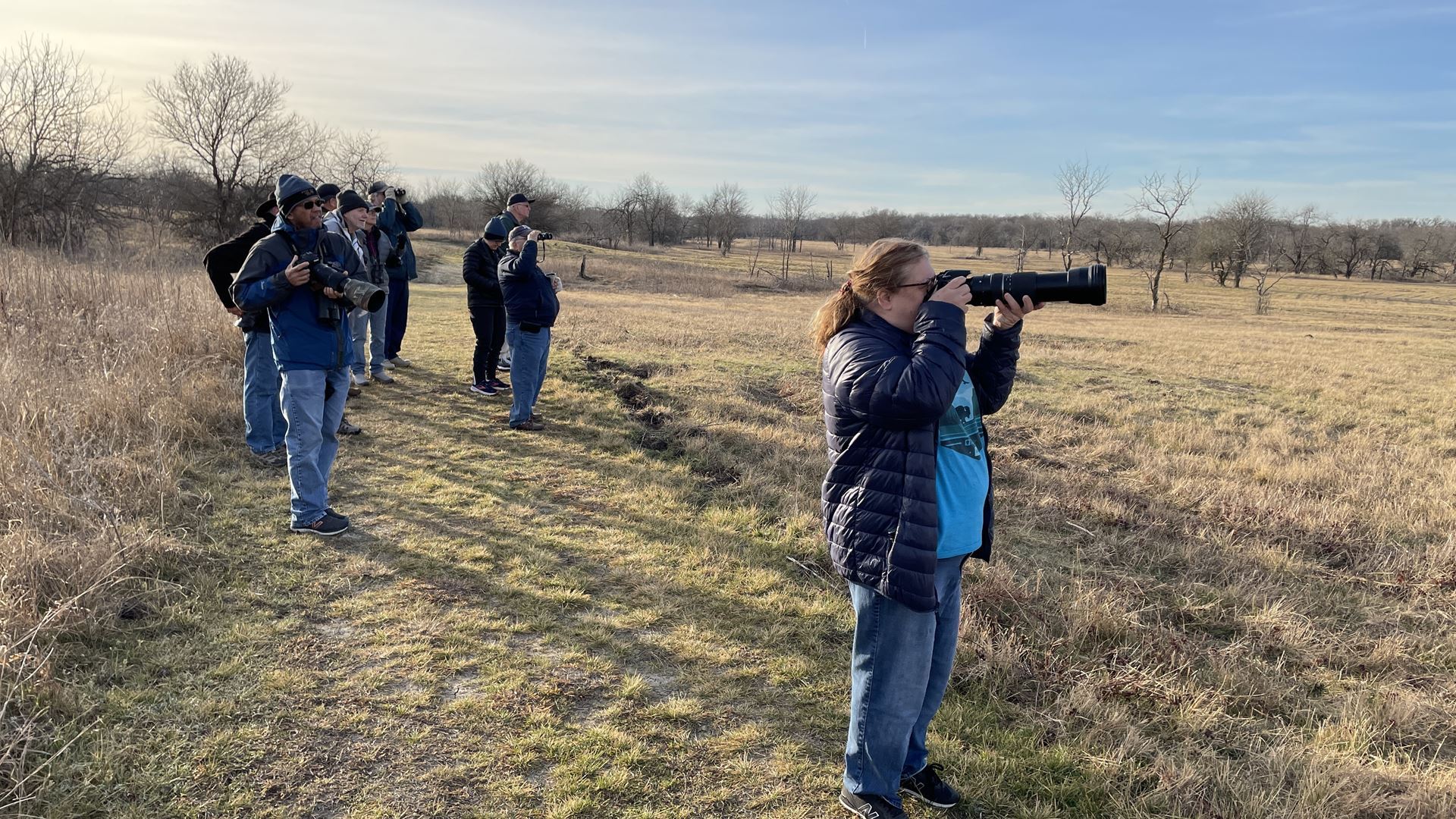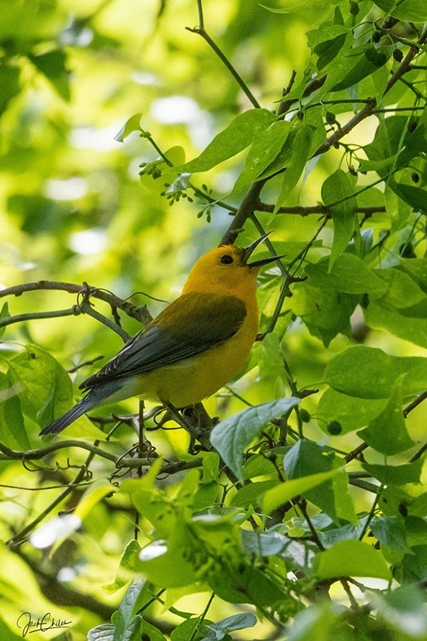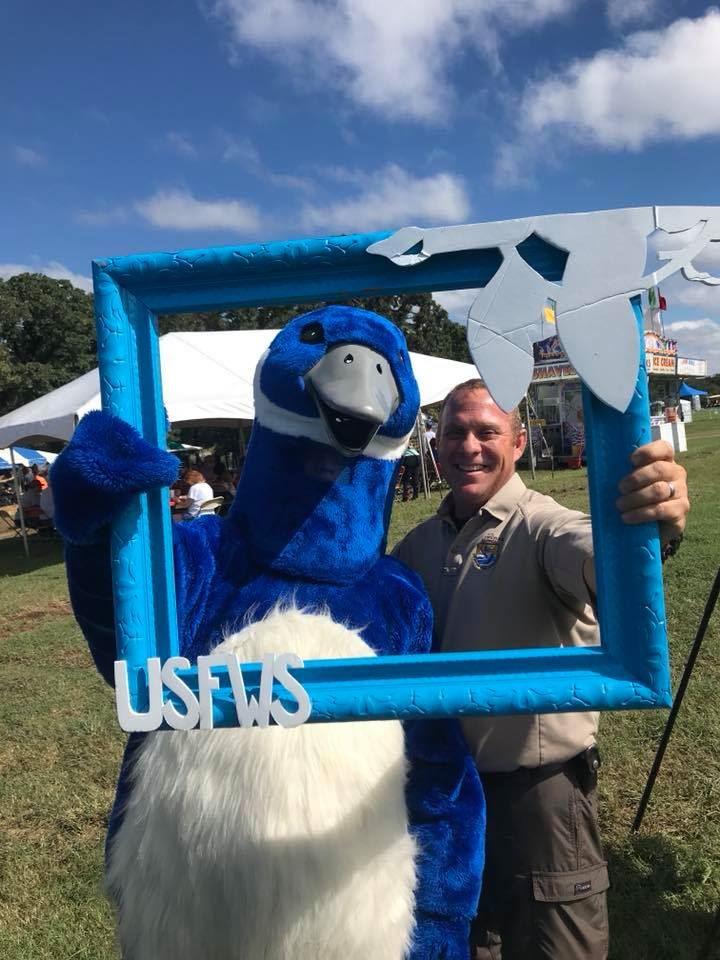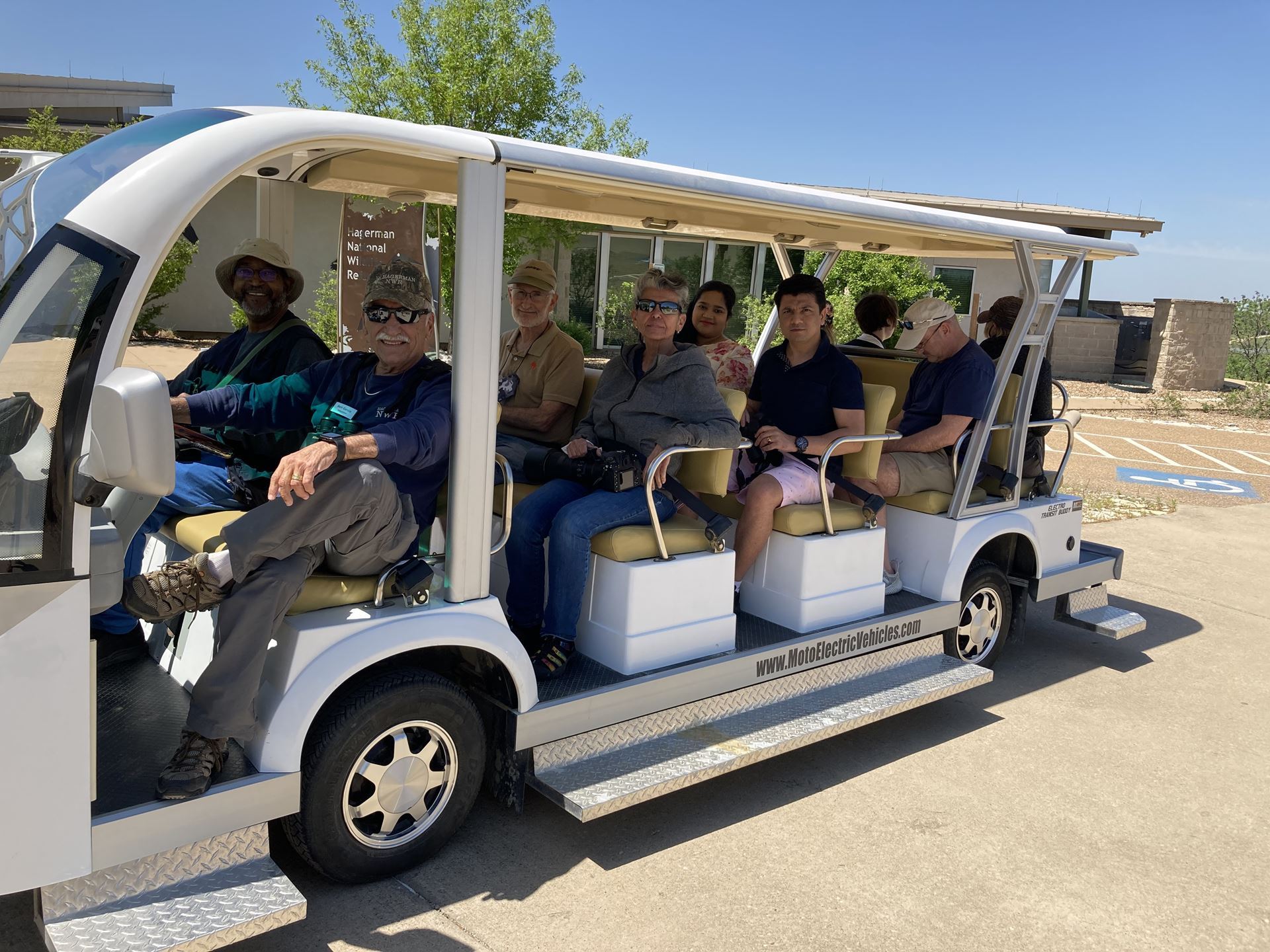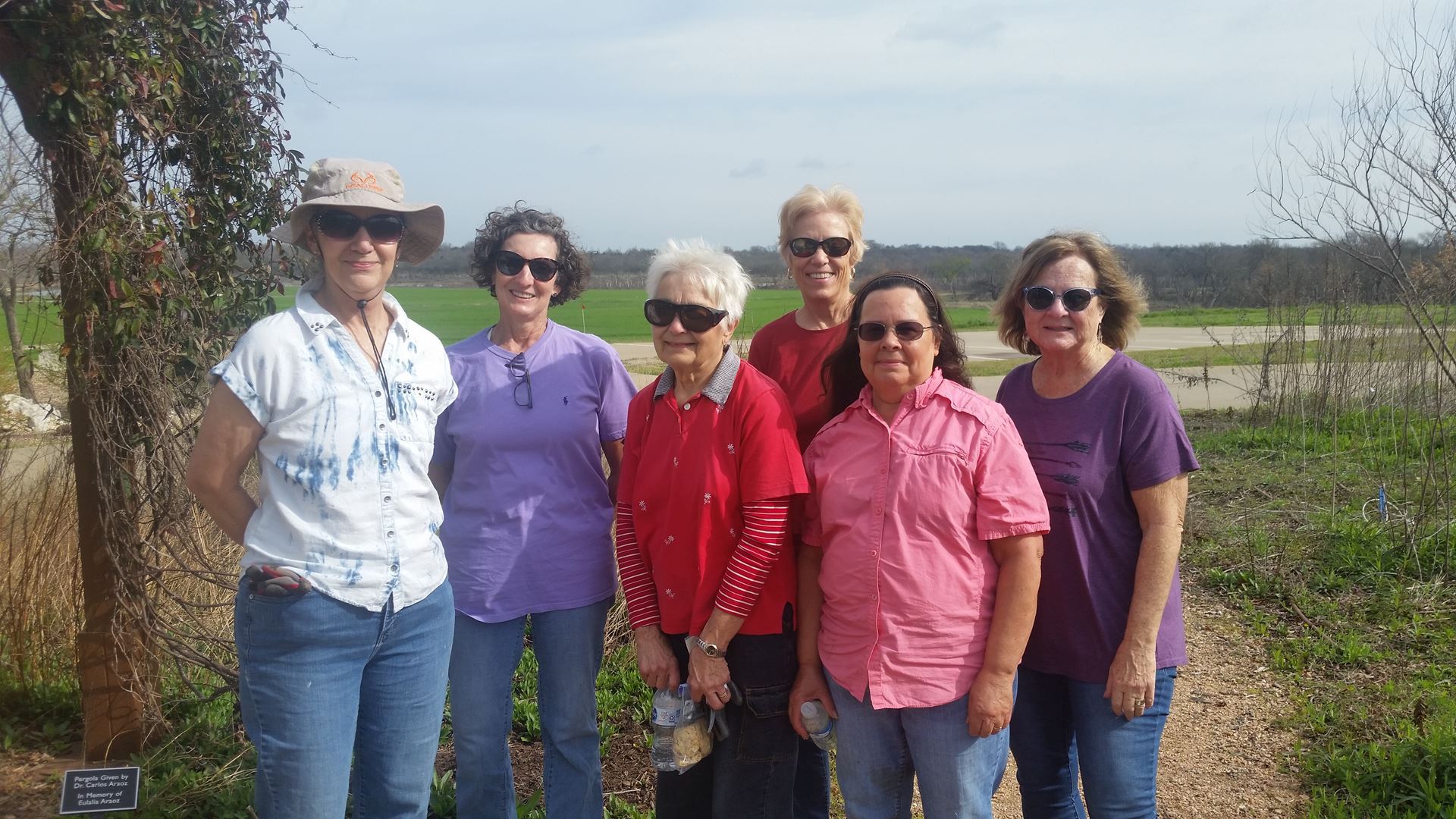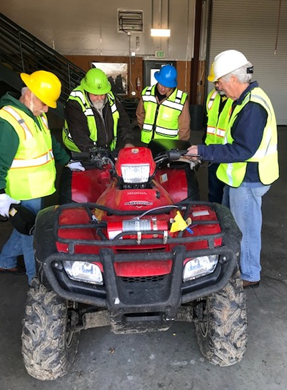Congratulations to Laurie Lawler for Finding
a New Hybrid Bird Species
By Kathy Whaley


First Ever Record of a White-eyed Vireo X Black-capped Vireo Hybrid
Photo by Laurie Lawler
For frequent Hagerman NWR visitor/Photography Volunteer Laurie Lawler, May 10th began as any other spring day: searching for birds to photograph and check-off her bird list. May is one of the best months for birding in Grayson County. Bird migration is in full swing and this brings new birds through the area daily. Along her journey, Laurie saw what she thought was a Blue-headed vireo which is occasionally seen here during migration. Using her exceptional photography skills, Laurie was able to capture a great photo of the bird. Upon closer inspection of the image, something looked different. She uploaded the photo to eBird (an online, worldwide bird database managed by the Cornell Lab of Ornithology) as a “vireo species”. The bird prompted a discussion among the reviewer community/eBird staff and the consensus was that it is likely the first-ever sighting of a hybrid pairing between White-eyed Vireo and Black-capped Vireo anywhere in the world. The body plumage of the bird matches White-eyed Vireo while the dark head and shape of the large eye ring (particularly the dark mark visible above the eye) are characteristic of Black-capped Vireo. There has only been one previously recorded instance of White-eyed Vireo hybridizing with another species ever (a Bell’s Vireo in California) and there are no prior records of a Black-capped Vireo hybridizing with any other bird. White-eyed Vireos are fairly common in north-central Texas and their overall population is stable. A unique feature of this species is the visible white eye that stands out during observation - this is one of very few passerines in North America that has white eyes. The preferred habitat of the White-eyed Vireo is dense forest or thickets making this bird more often heard than seen. | Invasive Chinese Privet by Kathy Whaley Let's Go Fishin': Free Family Fishin' Day! Research on the Affect of Bird Song On Us The Friends of Hagerman Online Auction Birding with Jack: The Weekly Bird Census Second Saturday: Alligators of Texoma Refuge Rocks! Let's Go Fishin' June 3rd! Tram Tours on the Wildlife Explorer! Gardening, Mowing and Work Crew Visitor Center Volunteers Needed! Subscribe to Our Monthly Featherless Flyer |
No pictures to show |
White-eyed Vireo X Black-capped Vireo Hybrid Photo by Laurie Lawler | Female Black-capped Vireo Photo by Bryan Caulk | Adult White-eyed Vireo Photo by Laurie Lawler |
Black-capped Vireos are a specialty species found in scrub-oak habitat near the Edwards Plateau and eastern Trans-Pecos regions of Texas and in northern Mexico. A few smaller populations of the species also exist in and near Wichita Mountains Wildlife Refuge in central Oklahoma. All Black-capped Vireos winter along the western coast of Mexico and return to Texas and Oklahoma from April through July to nest. Historically, loss of scrub-oak habitat due to development and fire suppression in the fire-dependent ecosystem, combined with brood parasitism by brown-headed cowbirds (they lay their eggs in vireo nests which often leads to nest abandonment) led to the species being listed as federally endangered in 1987. Through partnership efforts, purposeful habitat management, and brown-headed cowbird control, populations increased and the species was removed from the endangered species list in 2018. Congratulations to Laurie for being a super keen observer and noticing the unusual features of this bird that allowed it to be reviewed then officially recognized as new hybrid! We look forward to seeing your name as the observer with a location of Hagerman National Wildlife Refuge when the annual eBird taxonomy update occurs in October. |
Refuge Update: The visitor center is open Monday through Saturday 9-4, Sunday 1-5. It's a great time to visit the refuge! |
Recent Sightings |
No pictures to show |
Timber Rattlesnake By Jessi Vernon | Bobcat by Donnie Simmons | Green Heron By Laurie Sheppard | Mississippi Kite by Pam Rendall-Bass |
Upcoming Activities:
The Friends of Hagerman is Hosting 21 Free Family-Friendly Events in June! |
|
Were YOU There? All are welcome as a participant or a volunteer--A fun time is had by all! These Volunteers and participants enjoyed the Butterfly Garden for Refuge Rocks and Garden Walks. |
No pictures to show |
Be on the Lookout for Chinese Privet By Kathy Whaley Chinese privet (Ligustrum sinense) is a member of the olive family that is native to Asia, but introduced into the U.S. many years ago as an ornamental shrub. This species “escaped” into the wild in all southeastern states, including Texas, to become an invasive pest. Even though this shrub can be found in various parts of Grayson County, to date only two areas have been |
Chinese Privet Bloom | located on refuge lands - one on the road into Goode Day Use Area and the other along Meadow Pond Trail. These individual plants have been flagged for removal and will soon be eradicated, including small plants underneath the larger shrubs. Chinese privet can grow to be 20+ feet tall, but typical mature plants are 5-12 feet. Left unmanaged, privet can quickly dominate the shrub layer and form monotypic stands that shade out herbaceous plants. This results in non-native plants replacing native |
species and can change the entire plant composition of an area in a few short years. Although mowing and cutting can reduce the spread of privet by preventing seed production, chemical treatment of the stump is required to actually kill the shrub. In our area, Chinese privet blooms March-May and has very aromatic small clusters of white flowers that attract insects. Birds eat the small, blue-black berries produced late summer then “deposit” the seeds anywhere and everywhere which spreads the plants to new locations. |
No pictures to show |
Note the opposite leaf configuration of Chinese privet | Chinese privet berries |
If you are visiting the refuge and see this invasive plant, please report the location to refuge staff by emailing Kathy_whaley@fws.gov. The plant(s) will be removed to prevent further spread and protect our natural, native resources. For more information on Chinese privet, visit: Invasivespeciesinfo.gov |
Refuge Rocks Presents: Special Fishing Event! Ages 4-16 Saturday, June 10th, 9:00 to 11:00 AM, at the pond on Refuge Road just before the Visitor Center
Let's celebrate Texas Free Fishing Day by coming out to the refuge to fish with us! This special Refuge Rocks event for ages 4-16 will be held on Saturday June 10 at 9:00 to 11:00 AM. We provide poles and bait or you may bring your own. We will also have some fishy craft fun! Parent or other responsible adult must accompany children. Sturdy shoes, hats, sunscreen and insect repellent recommended, as well as lawn chairs or blankets. You may bring a picnic lunch and non-alcoholic beverages, no glass containers please! No advanced registration needed for this event. Event will be cancelled in case of rain. Future Programs: |
For information and registration, email cathyvanbebber@gmail.com or Contact Us Hurry! Space is Limited |
The Plant of the Month: Turk's Cap By Shawn Stone I never planted a Turk’s Cap in my back yard, but suddenly about 4 years ago I had one, likely a result of a random seed delivered from a bird that had eaten the fruit from one nearby. As a “bonus plant” it has all the criteria to make me want to leave it where it took up residence – low maintenance, low water requirements, colorful flowers, and attracts and feeds birds and butterflies. |
No pictures to show |
Turk’s Cap, also known as Drummond Wax-mallow, Texas Mallow, Mexican Apple, Red Mallow, and May Apple, thrives in all parts of the state of Texas and in all soil types. As noted by some of its many names it is in the Mallow family of plants, along with the hibiscus. It prefers afternoon shade but can be grown in full sun. There are also white and pink varieties in addition to the more common red variety. If you are not lucky enough to get a “bonus plant” they are readily available in garden centers that include native plants of Texas and online. For North Texas, the plant will die back in the winter but will come back up in the spring. Turk’s Cap is a larval food plant for several butterflies, including Mallow Scrub Hairstreak, Turk’s Cap White Skipper, and Glassy-winged Skipper in more southwestern areas of Texas but is a popular nectar source in all areas of the state for butterflies and hummingbirds. It also produces small fruits that provide a food source for many birds. The fruits, flowers, and leaves are edible for humans as well. |
For more information, visit: wildflower.org. Photos of Turk's Cap by Shawn Stone |
Research shows that Birdsong Affects Mental Health! |
Photo of Dickcissel by Pam Rendall-Bass All those deafening Dickcissels may be good for us! Check out this interesting article from the Washington Post: www.washingtonpost.com/wellness/interactive/2023/birds-song-nature-mental-health-benefits/ |
Contact Us for more information. |
Join Us With a Membership

The Friends of Hagerman Board of Directors
|
Dues From Memberships Enable the Friends to…
|
Birding with Jack: Updated, Weekly Census Results
By Master Naturalist Jack Chiles, Mike Petrick and Dr. Wayne Meyer |
Each Tuesday a team of experienced birders, including Master Naturalist Jack Chiles, traverse 35 miles of refuge roads and hiking trails, documenting every bird they encounter. This Bird Census is reported to The Cornell Lab of Ornithology for use in research, and each week we will bring you a link to their actual bird count, and a summary of their adventures. |
|
Bald Eagle It was a cool, still day for our census. There had been rain late yesterday and it was threatening rain again this afternoon. There are still a lot of mudflats at the refuge and a surprising number of shorebirds are still present. We had an estimated 300 White-rumped Sandpipers, most of them in Steedman Marsh. We saw several Semipalmated Plovers, a Dunlin. Killdeer, Greater and Lesser Yellowlegs, Least Sandpipers, Spotted Sandpipers, Wilson's Phalaropes, Semipalmated Sandpipers and Pectoral Sandpipers. At the end of Tern pad there was a Bald Eagle which appears to be approaching 4 years in age. There was a Tri-colored Heron near the north low water crossing. We saw Wood Ducks in several places with a total of 8 for the day. The Acadian Flycatcher is still hanging around calling near the low water crossing on Bennett. Yellow-billed Cuckoos are abundant this year with a count of 10 for the day. There were a total of 11 Least Terns on and near the sandbar off the end of Plover. We found 6 Greater Roadrunners today and one was sitting in the top of a tree at Sandy Point. We saw a total of 18 Mississippi Kites most of which were flying over Wildlife Drive. We found Red-headed Woodpeckers on the Harris Creek Trail and at Deaver Pond. There was a late season Swainson's Thrush on the trail to Meadow Pond. There was a Yellow-breasted Chat near the bridge on Enterprise Road. We counted 15 Painted Buntings, 5 Indigo Buntings and only 1 Blue Grosbeak. We finished the day with 82 species. Today's photo is a Bald Eagle. |
See the rest of Jack's notes and the latest Bird Census Results |
Hagerman Bluebirds This report is as of April 30th, and some progress has been made since then. With nearly 50 nestboxes being monitored weekly on the refuge, the Bluebirds are making a comeback after the deep freeze of 2021.
|
Photo Club Field Trip: Tishomingo National Wildlife Refuge in Tishomingo, OK
Mournful Thyris Moth by Rick Cantu Saturday, June 3, 2023, 9:00 am. Join the Friends of Hagerman NWR Nature Photography Club on a field trip to the Tishomingo National Wildlife Refuge in Tishomingo, Oklahoma. Address is 11766 South Refuge Road, Tishomingo, OK 73460.
You are welcome to walk any of the trails or drive the roads in the refuge. We can go in a group(s) or you can go on your own. Please be sure to stay on designated trails and roadways. Meet up for lunch 12:30 pm at Blake Shelton's Ole Red Restaurant. Ole Red is about 5 minutes from the Tishomingo NWR Visitor Center. Address: Ole Red, 214 West Main, Tishomingo, OK 73460. There are Three Main Trails: Craven Nature Trail. Length: 0.5 mile loop. Surface: Partially paved, gravel and boardwalk. Difficulty: Easy. The accessible 0.25 mile of asphalt pavement connecting the trailhead to Dick’s Pond boardwalk features interpretive panels and 3 benches along the route. This portion of the longer loop trail descends gradually through woodland habitat to bottomlands surrounding the pond. The boardwalk provides views of the pond and its surrounding marsh habitat. Sandy Creek Trail. Length: 0.25 loop. Surface: Dirt. Difficulty: Easy. This trail allows you to get a nice view of Sandy creek. Prairie Pathways Trail. Length: 0.5 mile loop. Surface: Paved, ADA compliant. Difficulty: Easy. Explore this area to discover information about local plants and animals and the area’s rich history at interpretive waysides. You will also see the native plants demonstration garden, works of art highlighting cultural and natural history, historic buildings and scenic views of the Cumberland Pool. What to Bring Hiking shoes, insect repellent, sun screen, water and snacks, binoculars and camera. It is strongly suggested to wear boots and long pants, plus bring spray to deter ticks. The ticks are very bad this year, so be prepared. Useful Links U.S. Fish & Wildlife Service - Tishomingo National Wildlife Refuge. Provides more details about the refuge, including driving directions and map of the refuge. When viewing the map, zoom in for a better view of the amenities, trails, trailheads, parking, roads, etc. Tishomingo National Wildlife Refuge Facebook In the event of any late changes to this event, such as cancellation due to bad weather, the FOH NWR website and Friends of Hagerman NWR Nature Photography Group on Facebook will be updated as soon as possible. For questions about this field trip, contact: Field Trip Leader Lisa Wilkins Mobile 972-658-8544 Email TexasBirdie@aol.com For questions about the photo club, contact: Lisa Wilkins, Photo Club Leader Email FOHphotoclub@gmail.com |
Butterfly Garden Walks It is Not Too Late to Become a Docent! |
Registration is not necessary |
Pipevine Swallowtail by Laurie Sheppard |
Come and learn how to identify the birds of North Texas while enjoying the beautiful sunrise over Lake Texoma! Modeled after Cornell's national "Big Sit" event, a group of dedicated birders invite you to join them at sunrise to conduct a bird count as multiple species fly to the water and the surrounding land to feed. Leaders will bring spotting scopes and will provide tips for identification of the many species you will see. This event lasts a couple of hours, but all are welcome to come and go as they please. Participants are advised to bring a chair, binoculars and water. The First Saturday of every month, beginning 30 minutes before sunrise.
|
Location: H Pad, Sadler, Texas 76264 (H Pad is in Sadler, but it is part of the refuge) GPS Coordinates: 33.734961, -96.780582
|
|
|
Early Bird Walk with Jack Chiles
Master Naturalist Jack Chiles will lead our Early Birding event, weather permitting. Bring binoculars or borrow ours. Meet at the Visitor Center and return in time for the Second Saturday program. Please Register (Optional) so we may inform you via email of unforseen changes/cancellations. |
Photo by Jack Chiles |
Second Saturday: Alligator Research on Lake Texoma with Tim Patton Saturday, June 10, 2023 at 10:00 AM in the Visitor Center Tim Patton with a gator There is a small but growing population of American Alligators in SE Oklahoma, and my collaborators and I have been monitoring the population since approximately 2005. In 2022, we received funding from the Oklahoma Department of Wildlife Conservation to conduct a more thorough population assessment. In this presentation, I will provide an overview of the ecology of alligators, our research objectives, and the preliminary results of our research. Tim Patton, Biography: I am a native of Arkansas, and I received a BS in Fisheries and Wildlife Management from Arkansas tech University. After that, I completed my MS and PhD in Zoology at the University of Wyoming, and worked for a while as a Research Associate for the Wyoming Cooperative Fish and Wildlife Research Unit. I have been a Professor of Fisheries and Wildlife Science at Southeastern Oklahoma State University since 1998. My research has focused on aquatic ecosystems, ichthyology, and herpetology. My current focus is on the ecology and population status of American Alligators. |
Future Second Saturday Programs |
| Puddles' Craft Corner Craft By Cindy Steele, Master Naturalist |
|
Puddles is taking a vacation in June to visit his Blue Goose friends at other refuges. He will return refreshed and with more crafts next month! |
|
|
Request a Group Tram Tour |
Register for a Tram Tour Today! |
Do You Like to Work Outside? The Refuge Needs You!
It takes a lot of people to have a beautiful garden! The Wednesday Garden Team Love to work with native plants and meet other gardeners? Come and help us add plants, weed and mulch our beautiful butterfly garden. Garden Team volunteers get first dibs on thinned native plants as well as access to seeds and cuttings for propagation. Gardeners meet on most Wednesdays, but times vary. Contact Us to subscribe to the volunteer garden team weekly email. Provide own tools and gloves. Minimum age 18, or 16 if accompanied by parent/volunteer. Mowing and Refuge Beautification: The Work Crew Do you enjoy working outside, mowing, sprucing up hiking trails, trimming and removing brush and general cleanup? Show your love for nature by joining the Outdoor Crew at Hagerman National Wildlife Refuge. Outdoor Crew volunteers meet on the First Tuesday and Fourth Saturday of every month. Contact Us for exact times, dates and other details about joining the volunteer Work Crew. Scouts welcome! |
Visitor Center Volunteers Needed! |
No pictures to show |
Do you enjoy meeting all kinds of people from all over the world, and like-minded people in our area? If yes, consider joining our team of Visitor Center Volunteers. You will greet refuge guests, distribute maps and other refuge information, and make sales in the gift shop. Shifts available every day of the week: Monday through Saturday 9 AM to 12:30 PM and 12:30 to 4:00 PM, Sunday 1:00 to 5:00 PM. Training is provided. Contact Us if interested. |
| Thank You To Our Contributors: Jack Chiles, Kathy Whaley, Shawn Stone, Jessi Vernon, Laurie Sheppard, Pam Rendall-Bass, Donnie Simmons, Amanda Seale Burns, Laurie Lawler, Rick Cantu Refuge Manager: Kathy Whaley Deputy Refuge Manager: Paul Balkenbush Visitor Services Manager: Spencer Beard Friends of Hagerman NWR Foundation 6465 Refuge Road, Sherman, TX 75092 Phone: 903-786-2826 Join us on Facebook: |
Search for any word--do not use quotes for phrases |
Kroger: Stop by the customer service desk at Kroger and link your Kroger Card to the Friends of Hagerman: the Friends will get rewards for every dollar you spend, at no cost to you.
Please add info@friendsofhagerman.org to your contacts to ensure delivery of registration confirmations, account information and the Featherless Flyer
See you at the refuge!

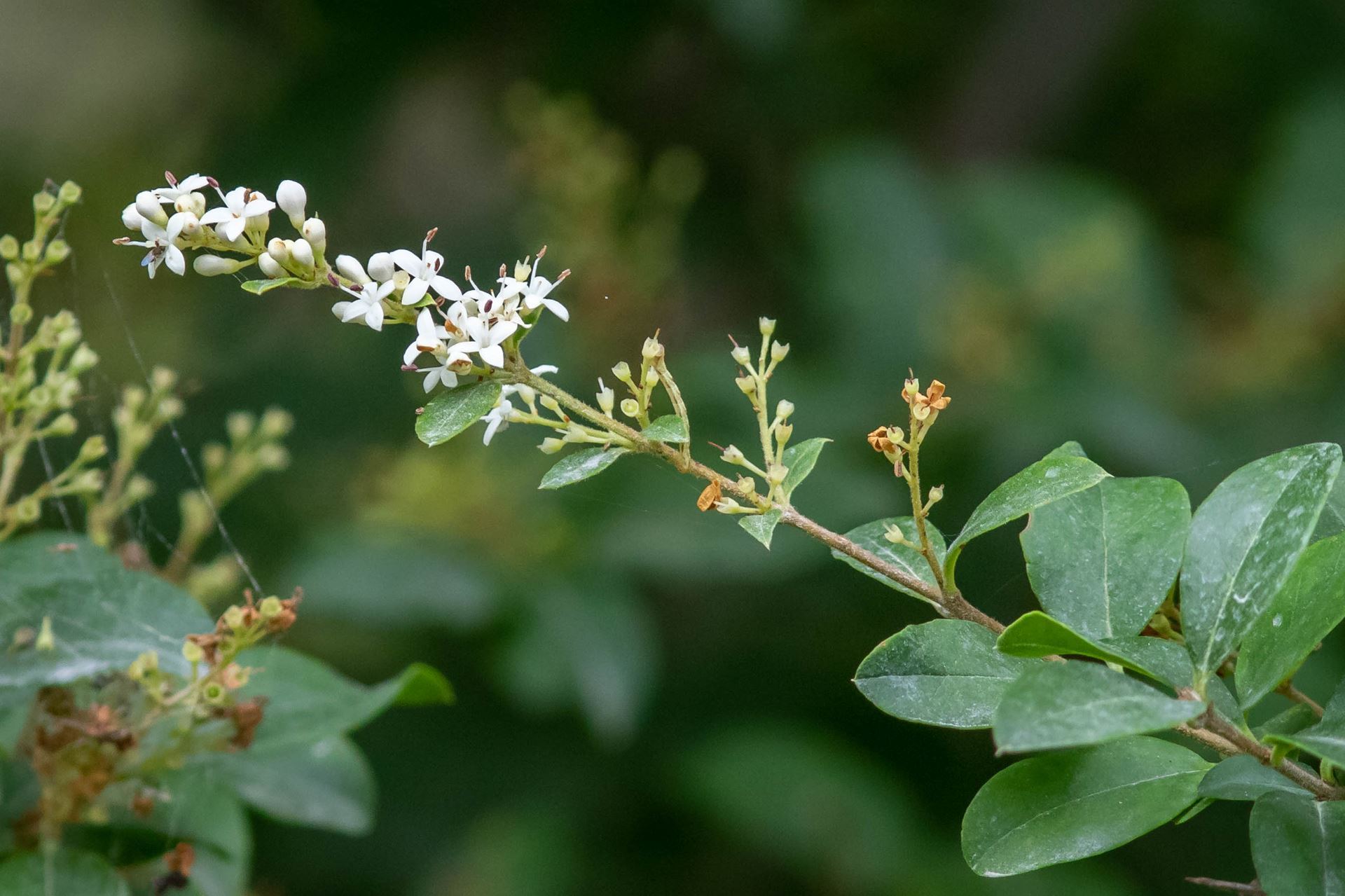
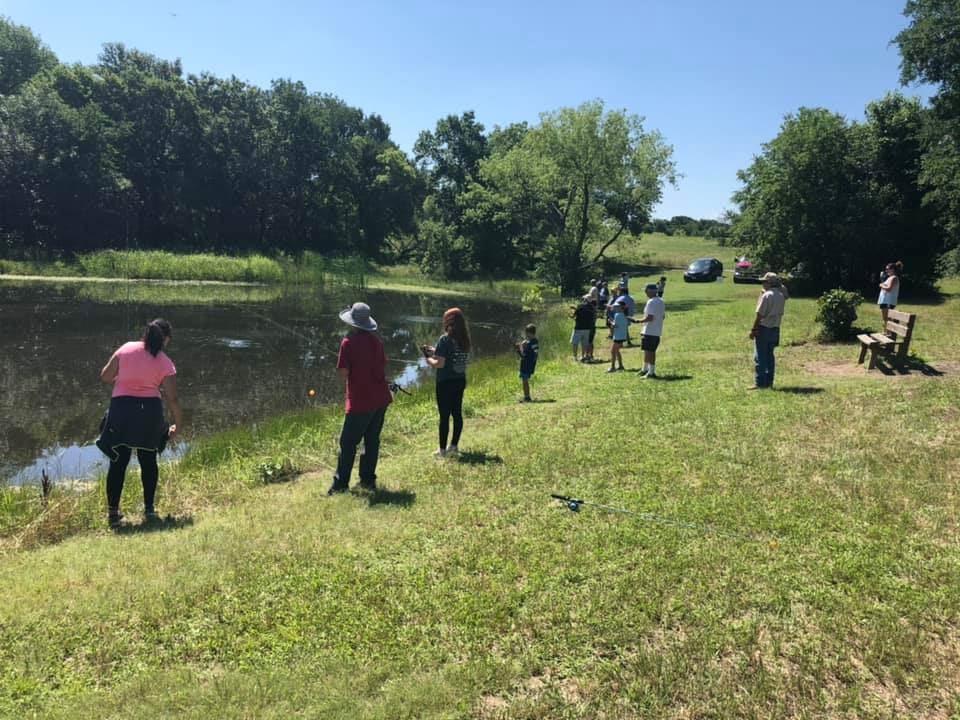
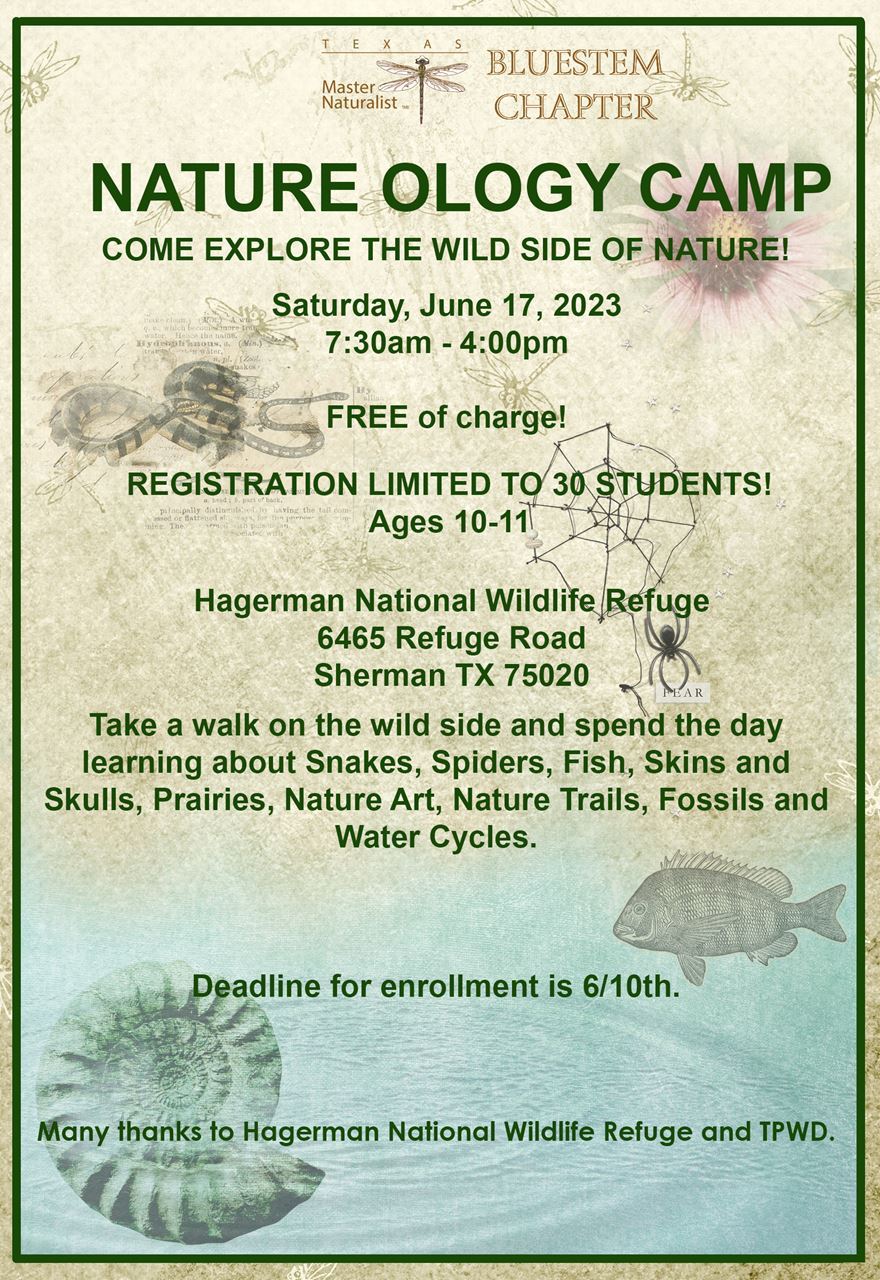
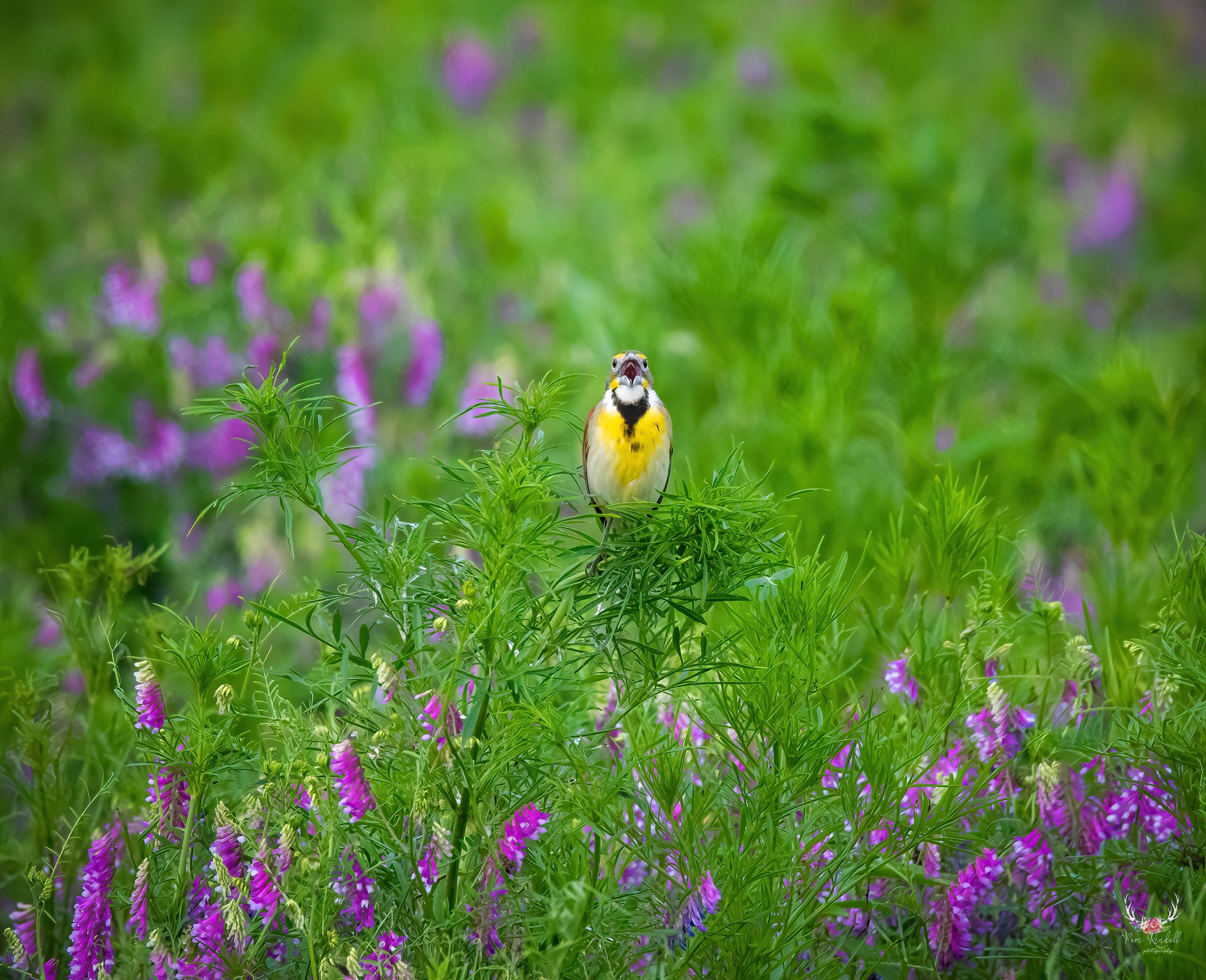
.jpg)
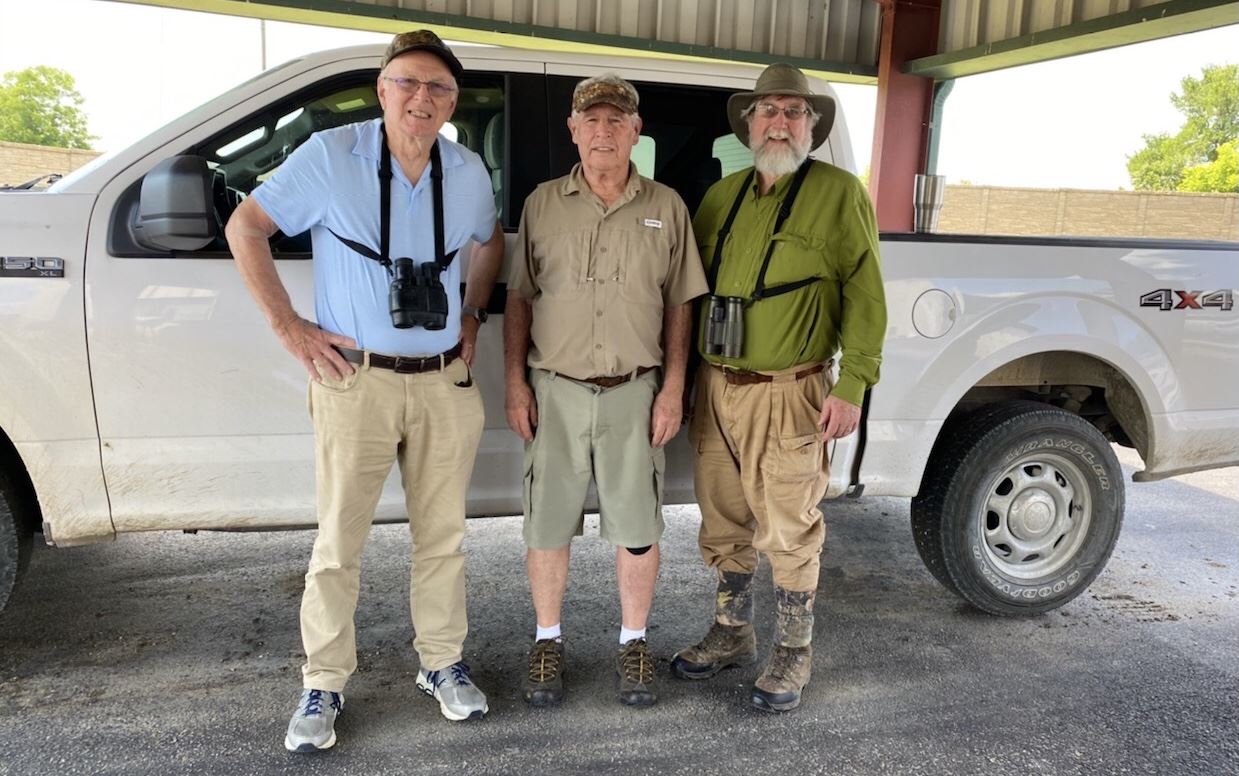
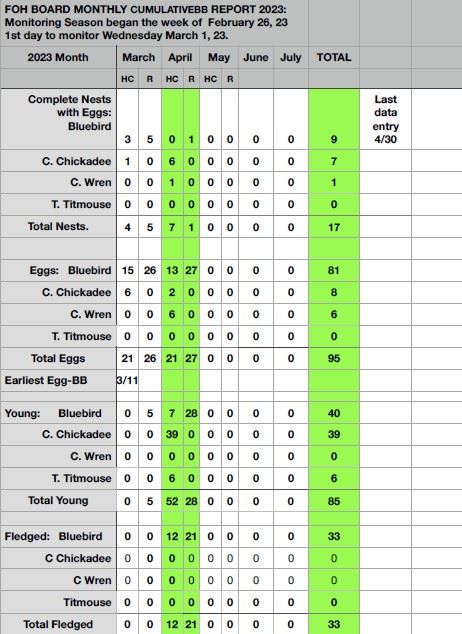

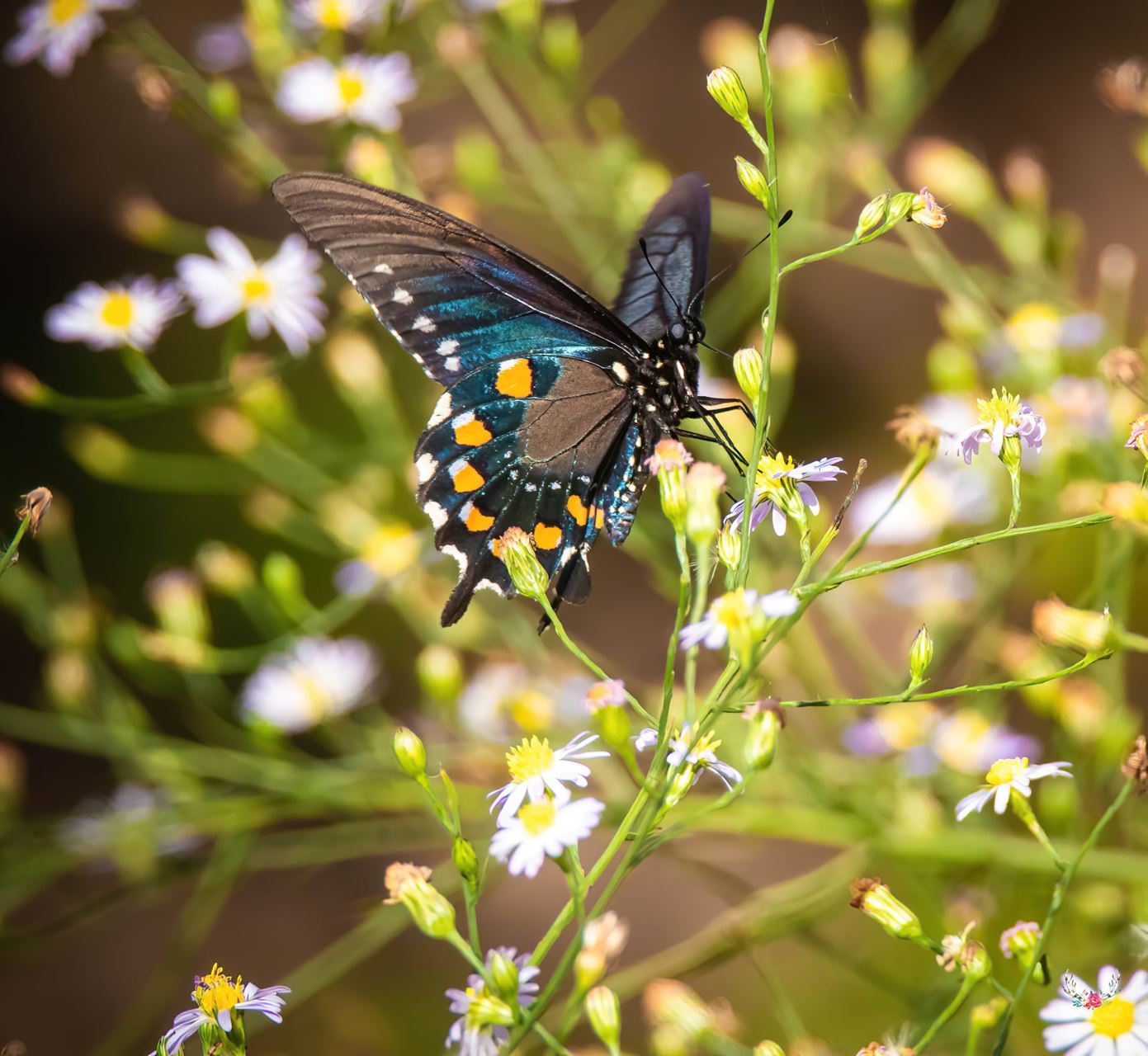
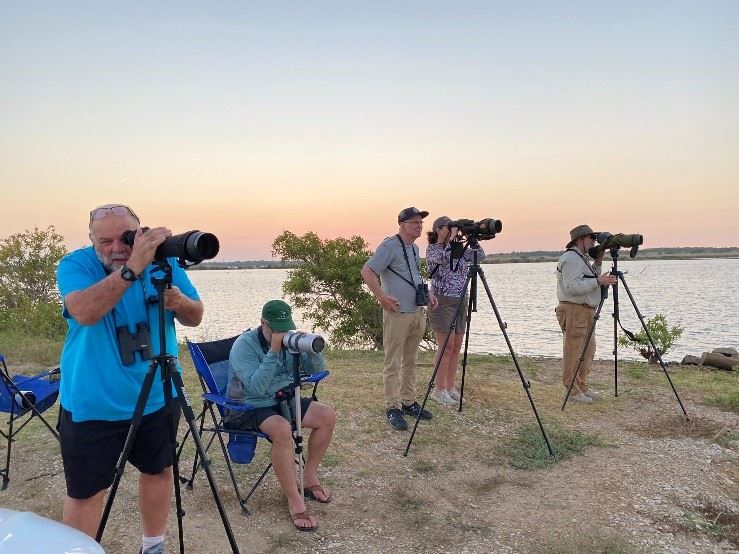
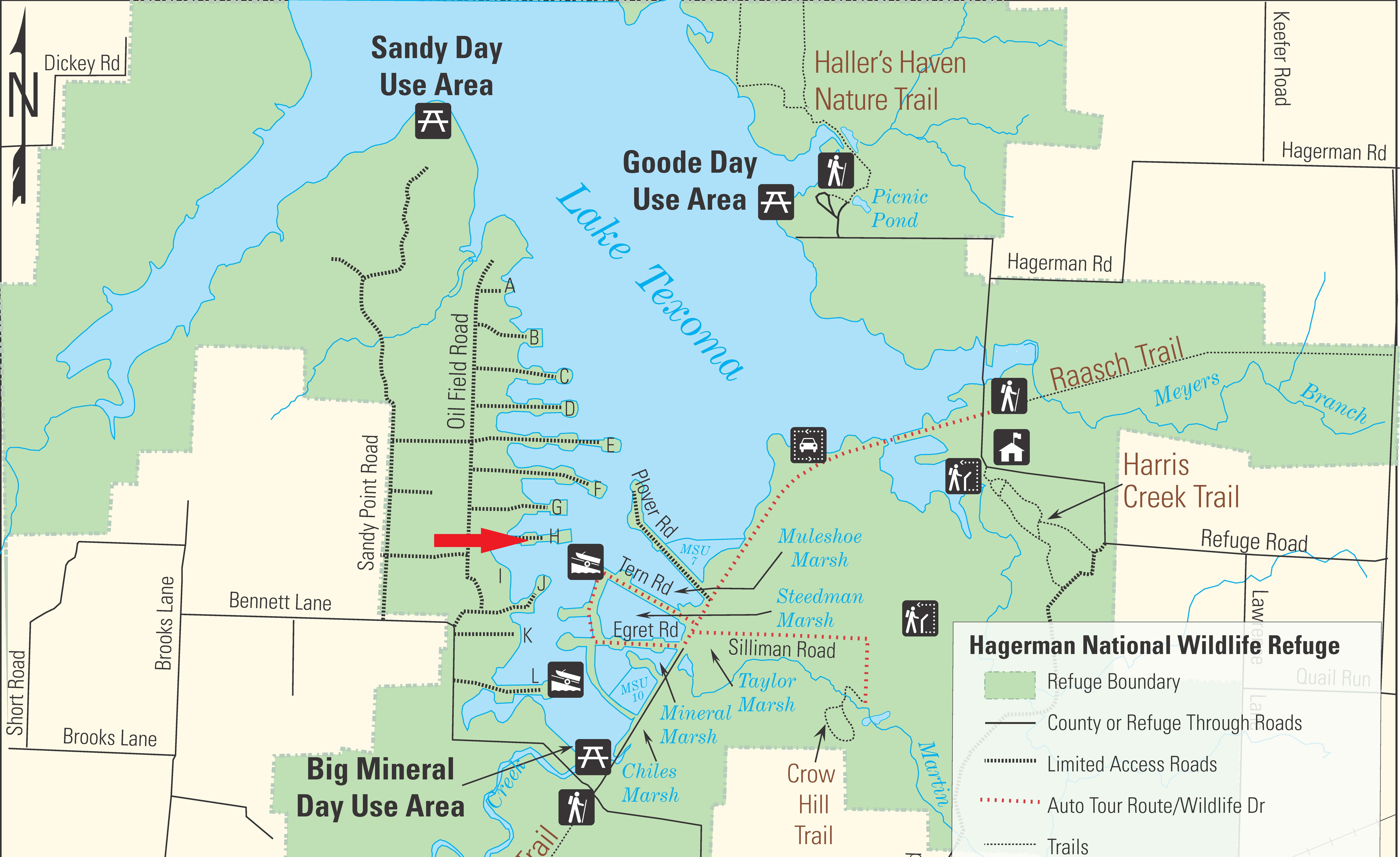
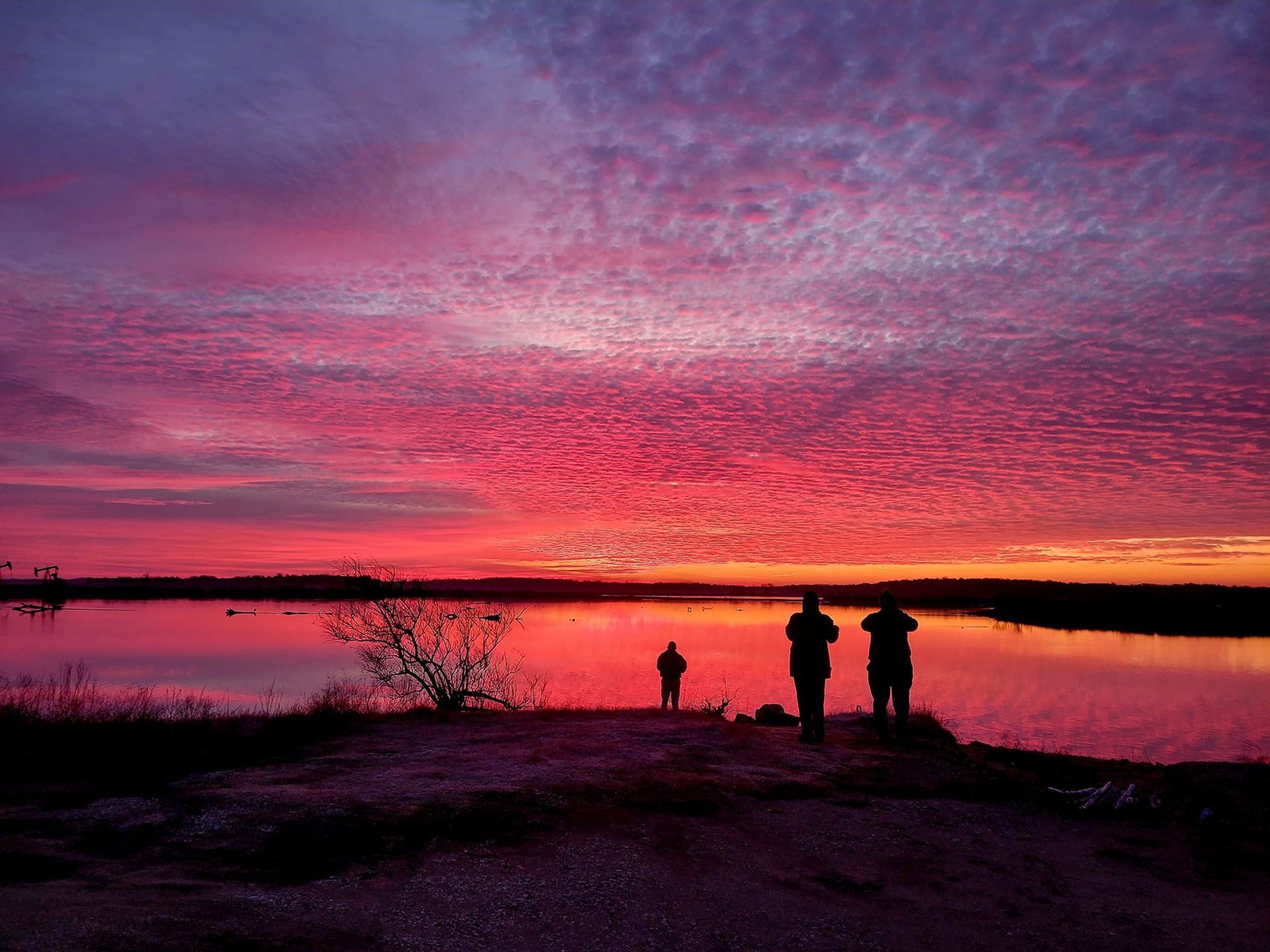 Photo by Laurie Sheppard
Photo by Laurie Sheppard